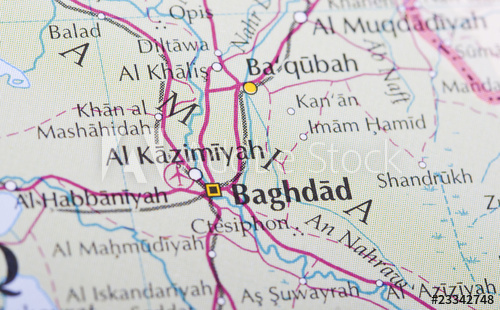On December 6th, 2019 a gunman opened fire in a crowd of unarmed protesters in Baghdad leaving 15 people dead, two of which were policemen. The shooting was a drive by according to protesters at the event and many officials think it was a political attack. The attack happened at an anti-government demonstration in parts of Jumhuriya, Sinak and Ahar bridges. The day before the shooting, there were random stabbings that happened at the protest in Tahrir square leaving 13 wounded. This is not the first occurrence of violence since the anti-government protests have begun. Iraqi prime minister Adel Abdul Mahdi claimed last week that he would resign because of the protests happening throughout Iraq that have gone on for months. It is clear that the violence against protesters is not coming to an end just yet. The UN has condemned the attack on unarmed protesters stating “The deliberate killing of unarmed protesters by armed elements is nothing less than an atrocity against the people of Iraq” and she urges protesters to understand the potential risks of violent acts (Giordano).
Including the 15 deaths that took place on December 6th, the death toll is now up to 100 people killed during attacks at night by unidentified gunmen that have targeted anti-Government demonstrators in central Baghdad and 400 total deaths since October 1st (Denouncing). Though it is important to note that not all of the protesters stayed peaceful either. They have set fires to the streets and blocked roads. However, these are acts of a minority of the protesters that are now acting in self defense from the security forces. Many protesters have to wear face masks and helmets to protect themselves from the beatings and gas that are used against them by the Iraqi security forces. Doctors and other activists that are assisting the injured and struggling protesters have also been subjected to kidnappings and killings by both the security forces and those against the protests.
There isn’t one reason in particular that the Iraqi people are protesting the government. A main concern for some protesters is the lack of investment into the well-being of the people while Iraq is known for having a large oil reserve. The money gained from the oil is being shared with very few and protesters demand basic necessities like clean water and electricity. An apparent lack of sustainable public services began in early October which sparked protests in Baghdad. Many are blaming the lack of jobs and poor economic outcomes for Iraqi people to be due to government corruption. In fact, unemployment levels reached 8% in 2018, according to the World Bank. Iraq is the 12th most corrupt country in the world according to NGO Transparency International in 2018 because the new regime is unable to absorb the new aid money they are receiving. The protesters believe that the corruption taking place is the cause of their economic problems and difficulty to find employment (Bunyan). Since the protests started, the violence incited against them has only further angered the protesters leading to the many months of demonstrations that have taken place. The violent behavior from the security forces caused the protests to move outside of Baghdad and spread across Iraq to major cities including Karbala, Maysan and Basra.
The mass amount of people that are protesting have not claimed to follow any single leader, but an outcome of social media. The protesters have organized themselves using apps such as Whatsapp and Facebook meaning they haven’t needed a leader. Because of this phenomenon, government officials have repeatedly disconnected internet connection and blocked certain social media websites to prevent the protesters from rallying. This is a connection to a theme discussed in our course. Seen in the video “How Facebook Changed the World,” the Arab Spring movement created a new platform for groups of protesters to gather support and set demonstration times and locations. This is a new and modern strategy of rallying support against the government that isn’t necessarily easily restricted or prevented. This is prominent in countries like Tunisia and Egypt where demonstrations against government corruption took place very similarly to Iraq.
It seems as though the people of Iraq have every right to question the usage of the $65 billion in oil export revenue in their country. If it’s not going toward increasing employment rates or public services and infrastructure, people of Iraqi protests should be demanding answers to better their own lives. A question that arises from this is: can the people of Iraq and the protesters expect rapid change from a country that consistently has issues of corruption with almost every leader? Additionally, government officials should work to end the violent force being used against state security as the protesters have turned a lot of attention to the killings and kidnappings of those fighting for the cause.
Overall, the situation in Iraq doesn’t appear to be coming to an end anytime soon. As security forces keep using violence against the protesters, the demonstrations will only become more populated. Until the Iraqi government leaders invest more money into helping the people rather than themselves, protesters will continue to raise awareness about the corruption. It will be interesting to see how the government reacts to the questions and demands that protesters have for them.
Works Cited
Bunyan, Rachael. “Iraq Protests: What Do the Protesters Want?” Time, Time, 13 Nov. 2019, time.com/5723831/iraq-protests/.
“Denouncing Attacks against Baghdad Protesters, UN Warns ‘Violence Risks Placing Iraq on Dangerous Trajectory’ | UN News.” United Nations, United Nations, news.un.org/en/story/2019/12/1053011.
Giordano, Chiara. “Fifteen Dead after Gunman Opens Fire on Protesters in Baghdad, Officials Say.” The Independent, Independent Digital News and Media, 6 Dec. 2019, www.independent.co.uk/news/world/middle-east/baghdad-shooting-iraq-protests-death-toll-latest-a9236511.html.


I really enjoyed reading this blog post. I was previously unaware of the current conflicts in Iraq regarding corruption, and you presented the information in a clear and concise manner. Clearly, your discussions of Iraq’s oil wealth and the use of social media by protestors connects to topics covered in class. In regard to the former, the Iraqi government has undoubtedly distributed oil wealth to a small group of elites at the peril of others. Perhaps, since Iraq has so much oil wealth, it does not require taxes from its population and thus the citizens are not directly invested in the government. As mentioned in class, this decreases government accountability and reliance on public opinion. I found it very interesting that the protestors do not claim to have a leader and are using platforms like WhatsApp and Facebook to organize gatherings. I think not having a leader could possibly result in the protestors taking divergent stances and coming off as disunited.
I think the intriguing question that you posed is exceptionally important to evaluate. Given that Iraq is the 12th most corrupt country in the world, it is seemingly unlikely that the government will take the protests seriously. Nonetheless, there is always hope that regimes can change, and that demands will be met.